Illinois Crop Update – June 23, 2023
Russ Higgins – Extension Commercial Ag Educator
Grundy County
Soil Conditions: Severely Dry (soil is very dry, water bodies are very low, vegetation is stressed)
Another week without a hint of precipitation in most of NE Illinois; soy has basically stopped growing and corn fields are struggling to canopy between rows. My thermometer is registering 99 degrees this afternoon. I truly hope to share a different story next week. There is concern on how long these crops can hang on before suffering significant yield consequences.
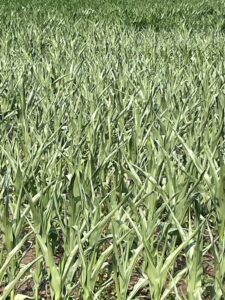
Figure 1: Wrapped corn – Grundy County June 20, 2023
Kathryn Seebruck – Extension Commercial Ag Educator
Ogle County
Soil Conditions: Moderately Dry (soil is dry, plants may be browning or stressed, water bodies are low)
Conditions are still dry as we have yet to receive measurable rainfall in the area. As POST herbicide applications are being made, caution should be heeded as to which varieties are being sprayed. Some non-Enlist soybean fields have had Enlist applications, resulting in serious damage and plant death. Soybeans are starting to flower, but plant growth has slowed.
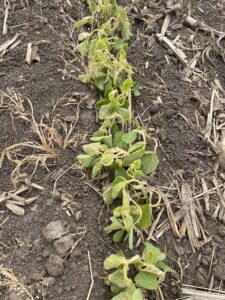
Figure 2: Enlist injury on non-Enlist beans.
Doug Gucker – Extension Local Food Systems and Small Farms Educator
Macon County
Soil Conditions: Severely Dry (soil is very dry, water bodies are very low, vegetation is stressed)
Corn, soybeans, and forages are stressed with growth stunted. V10 growth stage corn is barely shoulder high at its highest point. Soybeans planted in 15-inch rows at the end of April are finally closing over. Most corn is in the V7 – V10 growth stage with some at V11. Soybeans vary from V7 to R1. Wheat harvest is just beginning in this part of Illinois (DeWitt, Macon & Piatt Counties). Second cutting hay looks to yield about 50% of first cutting on the average across the area. Pastures and roadsides are brown where grazed or mowed.
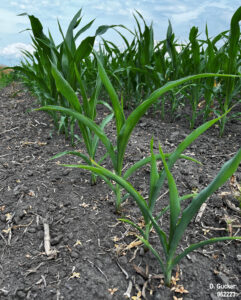
Figure 3: Dry conditions are causing variability in late planted fields.
Nick Seiter – Extension Field Crop Entomologist
Champaign County
Soil Conditions: Moderately Dry (soil is dry, plants may be browning or stressed, water bodies are low)
On a trip to Monmouth this past week I saw the beginning of some likely spider mite infestations; if the drought continues, these become increasingly likely in soybean. This is a great reason to hold off on broad spectrum insecticide applications, which don’t touch the mites but eliminate their natural enemies. (Also, a good reason not to mow your grassways if you don’t have to).
Talon Becker – Extension Commercial Agriculture Educator
Vermilion County
Soil Conditions: Moderately Dry (soil is dry, plants may be browning or stressed, water bodies are low)
This afternoon, I took a drive through western Vermilion County. Like much of the state, still, conditions are very dry. There was large variability in growth stage between fields. Corn generally fell in the V6-V10 range, although some of the later planted fields are not quite there and appear to have significantly slowed growth. In general, the larger corn looked healthier with less water stress, indicating there is some plant available moisture at the deeper soil levels accessible to roots of these larger plants, but perhaps not by the corn closer to V6. Soybean fields also showed a good deal of variation in terms of overall growth (open trifoliates, nodes, branches, etc.), although most fields I stopped and walked into were showing at least some flowers, with several at R2. Although there was variation in the overall appearance of health in the soybean fields surveyed, there were flipped leaves and signs of water stress in all of them. I did come across one wheat field that looked to have good head size and minimal disease. Harvest for that field is likely just around the corner.
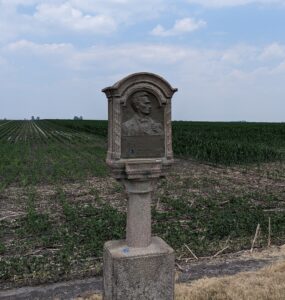
Figure 4: The “Lincoln Marker” at the Champaign-Vermilion County line with struggling soybeans and corn in the background.
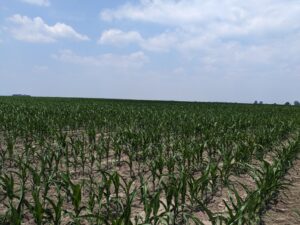
Figure 5: Stunted and water-stressed corn at V5-6 – Vermilion County, June 23, 2023.
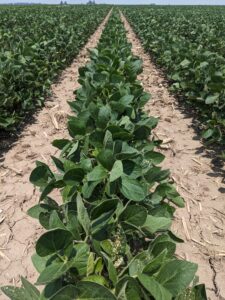
Figure 6: Soybeans showing water stress (flipped leaves) at R2 – Vermilion County, June 23, 2023.
Nathan Johanning – Extension Commercial Agriculture Educator
Monroe County
Soil Conditions: Severely Dry (soil is very dry, water bodies are very low, vegetation is stressed)
It is still very dry overall across our area. We have had a few scattered rain chances that have brought most at least some rain; however, we are at such an overall deficit, that it just doesn’t feel that it goes very far. Last weekend was the most “widespread” rainfall we have had, but still some areas got as little as 0.2” but many had 0.6” to 1” with a few getting more than that in isolated areas. The saving grace across the board has been our mild temperatures. Most corn and soybean fields look good and are growing but has some stress areas on hot afternoons. There are areas that missed rain where there was some replanting although it has been a balance as without rain replanting may not be any better than the first attempt. We are in full swing of wheat harvest. It has taken some time to get the crop dried but early reports are of good yields overall. Planters are tailing right behind harvest hoping to get double crop soybean in prior to any possible chance of rain.





